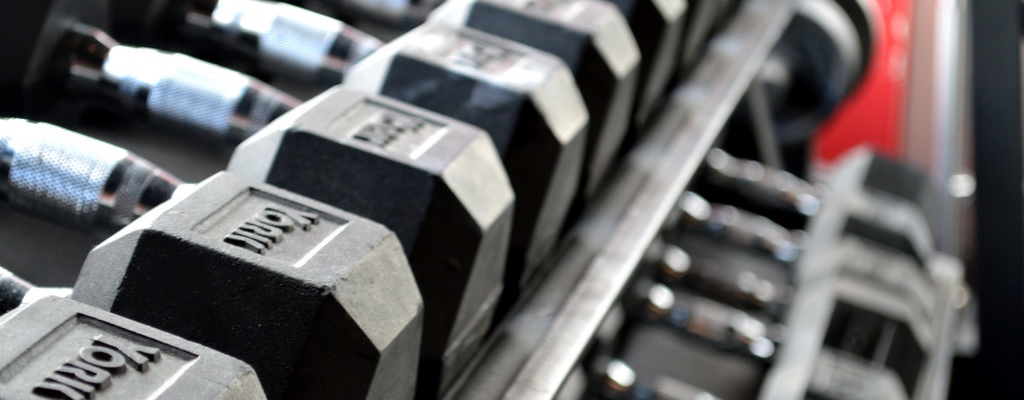FROM THE PROMOPT BLOG

Strength: 1. the state, property, or quality of being strong.
The renowned Strength and conditioning coach, Vern Gambetta summed it up best when he asked the question, “How much strength is enough?”
Muscles have multiple functions. They help stabilize our joints, absorb shock, and produce force. Muscle is also an incredible sense organ. Our muscles give us the ability to appreciate how heavy things are. They feed us information regarding the position of our bodies in space, and the position of one part of the body in relation to the others. They are able to respond to changes in speed of movement and allow us to increase and decrease strength output automatically.
“Mass, acceleration, inertia, and momentum, the primary physical qualities shared by all material objects have no meaning apart from the amount of effort that is required to make the objects which possess them move or stop moving. Our muscles are the scales by which we continually assess these invisible forces.” — Deane Juhan
Strength development can directly impact our activities of daily living as well as our sports and leisure activities. Physical activity requires a given percentage of your muscular capacity or strength. Improving your strength can help you perform these tasks more efficiently and with less physiologic stress to your body.
In laymen’s terms, the stronger you are, the easier it will be on your body to withstand the daily forces you encounter. Improving your muscular fitness level may also help you develop other health-related benefits like a reduction in the risk of osteoporosis, low back pain, hypertension, and diabetes. It will also be used in conjunction with cardiovascular exercises to help you burn more calories and lose weight. The value of building muscle mass will increase your ability to burn fat as a fuel source. Muscle is the key to increasing your metabolism.
King Muscle
Covert Bailey, the author of Fit or Fat and Smart Exercises says that the greater your muscle mass, the greater an opportunity there is to burn fat. He refers to muscle as “King Muscle” because it can burn fat even at rest. Fat is muscle’s favored fuel source. When you train your muscles with resistive exercises, you burn the stored form of sugar we call glycogen. Once you finish exercising, your body will burn fat to replenish the glycogen you just finished burning. Remember, the greater your lean body mass (muscle mass), the more calories you will be burning on a daily basis.
In a long term study performed at the Harvard Medical School between 1996 and 2008 on more than 10,000 men aged 40 or older, researchers measured body mass index (BMI), physical activity level, weight, and waist circumference to determine which exercises had the greatest effect on belly fat. The men who did 20 minutes of weight training daily had a smaller increase in belly fat than the men who spent the same amount of time engaging in moderate to vigorous aerobic activities. Since hard bellyfat in men has been associated with greater chances of heart disease, this study underscores the importance of adding resistance training to any exercise program.
On a daily basis, we only utilize approximately 30% of our muscle energy stores. The other 70% is held in reserve like an auxiliary fuel source that can be accessed if needed. For example, when we are challenged by disease, injury or trauma. The more muscle reserve you have, the less the tank is depleted in fighting the effects of the challenge, and the more easily you can meet the challenge.
Power
Recent research shows that as we age we begin to lose muscle mass. This is called sarcopenia. Men and women lose approximately 1% to 2% of their muscle mass per year after the age of 50. This means that we also lose strength. Muscle power is also declining after the age of 60. Power loss is 3% to 4% per year, or two times greater than strength loss. Why the difference? As we age we selectively lose a greater percentage of fast-twitch muscle fiber. This is the fiber type that creates power. Therefore, loss of muscle mass alone cannot be the sole contributor to the comparatively greater loss in muscle power. It is a selective loss of a specific fiber in our muscles.
Why is this important? Power is the ability to create force quickly. It is what helps you throw a ball fast, jump, or quickly get out of the way of a car that swerves in to your path when you are crossing a street. With a loss of power comes a loss in safety. In addition, when there is a diminished resource to draw on and less decreased ability to bounce back from an injury.
How Much Strength Is Enough?
So what’s the answer to the question, “How much strength is enough?” The answer? It depends on what you want to do! Specificity in training means that programs can be modified to meet the demands of any sport, work situation, injury or personal goals.
At Pro-Motion Functional Fitness, we will address your strength and power needs with a customized program, based on your goals. Functional strength training will involve training multiple movements and muscles. Our approach will incorporate the following principles:
- Develop strength that will create functional transfer: The ability to express the functional strength gains you make at home, work, and play.
- Provide strength training with a spectrum of activities.
- Train movement and muscle.
- Train core and extremity strength.
- Train the control of your own body weight.
- Train your muscles at different speeds to build strength and power.
We can help your muscles work for you. If you want to learn how to train your muscles to meet your goals, check in with us at Pro-Motion Functional Fitness.
Photo Credit: AberroCreative via Public Domain








